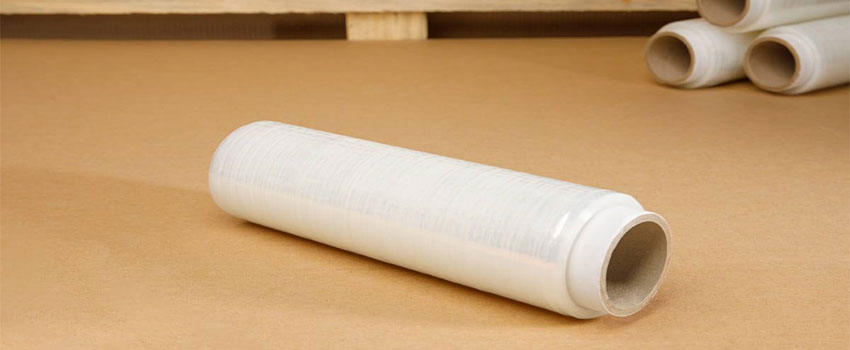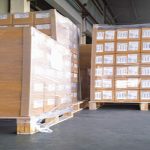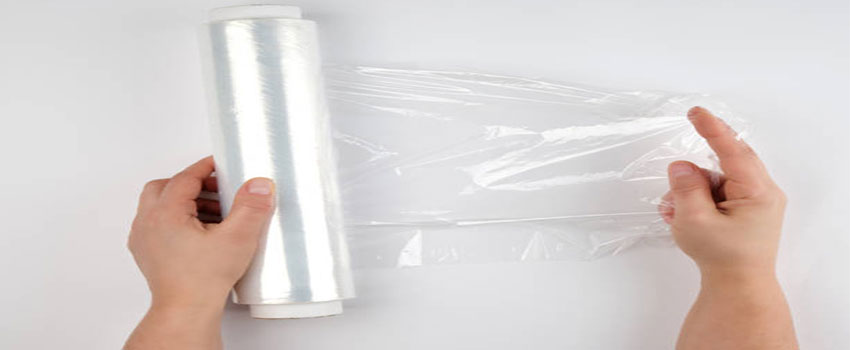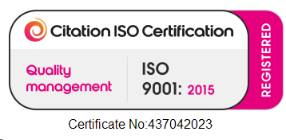Widely used interchangeably, Stretch film and shrink wrap— are common changeable materials that serve a variety of purposes and require a variety of applications. A plastic material called stretch wrap is elastic and can be rapidly stretched on material loads to secure the load for shipping.
Shrink wrap, on the other hand, is often used to bundle smaller products. Items can be enveloped in shrink wrap to provide a vacuum seal that guards things against extraneous environments like weathering or dust. Shrink wrap can also be used loosely and heated to shrink it down.
Stretch Film Provides Additional Protection to Your Goods
Stretch wrap is frequently sold in continuous plastic rolls with different strengths and load capacities. Each type has characteristics distinct from the use for which it is intended. For safety purposes, some wraps, for instance, are designed to hide the contents from sight. Others are created expressly to shield shipments from moisture, dust, or static electricity. Depending on the task, the stretch wrap can be made by hand or electronically.
Depending on the purpose, the gauge is a measurement of the wrap’s thickness. In general, a gauge’s resistance to breakage increases with increasing gauge area. You must select the gauge that is adequate for the load because higher-gauge wraps tend to cost a little bit more.
It’s also crucial to keep in mind that, despite the reality that higher gauge wraps are thicker and a little more expensive, their greater strength means that you use fewer of them overall and help lower the likelihood of worker fatigue, particularly if this is a task that they perform over and over again throughout the day.
A pre-stretched wrap is mechanically stretched almost to the failure point and provides a lighter-weight replacement to the 80-gauge films used as an industry standard while maintaining the same load stability and tension. The fact that these wraps are easier to apply means that they can also aid in preventing worker weariness.
High-performance technology wraps, one of the more recent substitutes, currently offer more strength and puncture resistance at lower gauges.
Stretch Film Prevents Damage to Your Shipments
Stretch wrapping is one of the most practical and economical techniques to help assure the safe transportation of your products. Stretch wrap is used by businesses all over the world to wrap items, whether manually or mechanically. The items being wrapped can differ significantly.
The majority of businesses that utilize stretch wrap bundle several products into a single load. However, some employ stretch film to protect products from the outside.
In this post, we are going to detail some of the most commonly stretch-wrapped products across the globe. The different products detailed use a variety of different film widths, thicknesses, and types.
 Products That are Packed Using a Stretch Film
Products That are Packed Using a Stretch Film
Boxes
The vast majority of retail items purchased and sold globally are bulk-packed in corrugated boxes. After being filled, various bulk-packed boxes are palletized for shipping. Stretch film types can differ depending on two key elements. the pallet load’s total weight and the way the stretch wrap is used. Depending on the application, the latter can be easily determined by either a hand or a machine film. It can be challenging to choose the proper film for the pallet’s overall weight. There are additional considerations, including load type and pallet height.
The majority of businesses that wrap pallets of boxes now use pre-stretched stretch film or alternative high-performance resin compositions. Users can utilise a thinner film with the substitute resin stretch film while still getting a secure load. These alternate combinations come in a variety of thicknesses and under various labels. It is strongly advised to find the suitable high-performance film to secure palletized boxes. Companies may save tens of thousands of dollars annually.
The pre-stretch film is a standard gauge film that has been rolled up and stretched up to 90% of the whole stretch rate. A very little stretching is needed to apply the pre-stretch film. It is a great choice for small, homogeneous box loads.
Furniture
Stretch wrapping is frequently used to convey new furniture from the manufacturer to the merchant. Many items of furniture are shipped separately because they cannot be placed on a pallet. Stretch wrap is frequently used for external protection during shipping after being used to wrap new furniture.
Once the sculpture is on display at the retail store, the film that was used for transportation is frequently taken off of it. The utilized film does not require load tension and is just used for exterior protection. The pre-stretched film is the cheapest choice for this application. The pre-stretched film provides economical exterior protection.
Wood
Stretch wrapping is used to transport wood in all shapes and kinds across the globe. The majority of firewood and other raw wood products are stretch wrapped, but lumber is regularly banded and does not frequently utilize stretch film.
One of the most popular stretch-wrapped wood products is firewood. A vented stretch film is frequently used by businesses that sell firewood for curing. After being chopped, the wood must cure for several months before it can be burned. The palletized wood can release moisture through the vented stretch membrane, making it ready for burning.
The wood is frequently cut into smaller pieces for burning after it has dried. Stretch film that is 2 to 10 inches wide is frequently used to wrap the wooden packages.
Canning and Bottles
Bottles and cans that have been case-packed are palletized and sent all over the world. The majority of liquids come in bottles or cans. They are regularly supplied in large volumes to retailers because they are consumable goods.
Pallet hundreds of bottles and cans can be extraordinarily heavy, relying on the pallet height. Most pallets of bottles and cans vary from 1800 lbs. – 2800 lbs. Though the pallet masses are frequently heavy, they are uniform and lack sharp edges and corners.
When it comes to wrapping pallets of bottles and cans, many businesses opt for a stretch film made of higher-performance resin. While maintaining load security, the thicker high-performance film is frequently more affordable than a premium stretch film.
Buy Stretch Film to Protect Your Goods and Ship Them Safely
Only a small number of stretch wrap uses and variants are shown in these well-known goods. Businesses that wrap numerous loads of goods each year should seriously explore the various films on the market.
Finding a suitable stretch film for the object being bundled at an affordable cost will save film expenses and load damage. If you have any queries regarding the use of stretch film, contact our customer service staff, and we’ll do our best to provide the appropriate stretch film at an acceptable price.







